Showing 61–72 of 132 results
-
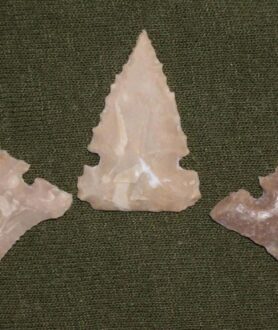
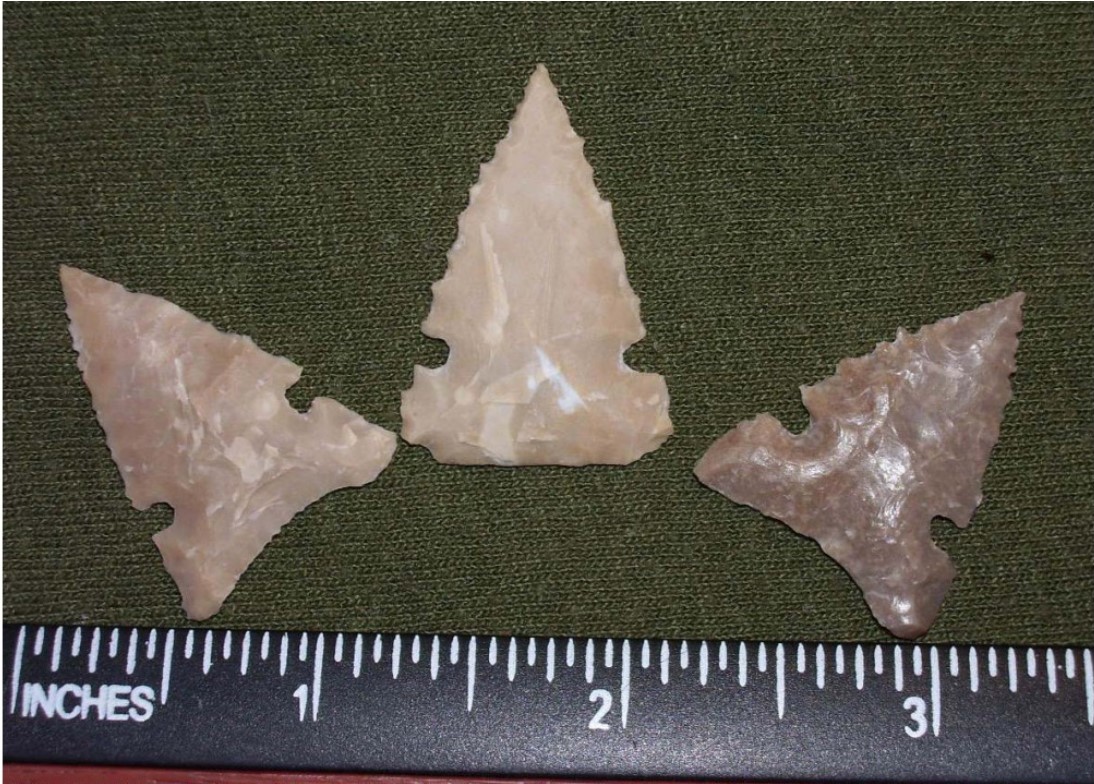
$35.00
This set of 3 economically priced flint hunting points are made of Texas flint and have very sharp, finely serrated edges. They all weigh 30 grains (+/- 2 grains) and are fully functional hunting points designed for big game. These points may be lighter than the typical steel broadhead, but they still provide 7/8 inch cutting widths for large wound channels and short blood trails. These points are thin for minimum resistance, but have stout designs to resist breakage and ensure maximum size retention when striking the target. I’ve taken several deer with points identical in size to these and they’re devastatingly effective when the arrow is put in the right place. Free shipping within the U.S.
-
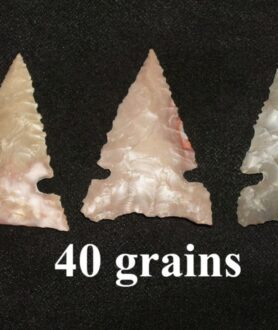
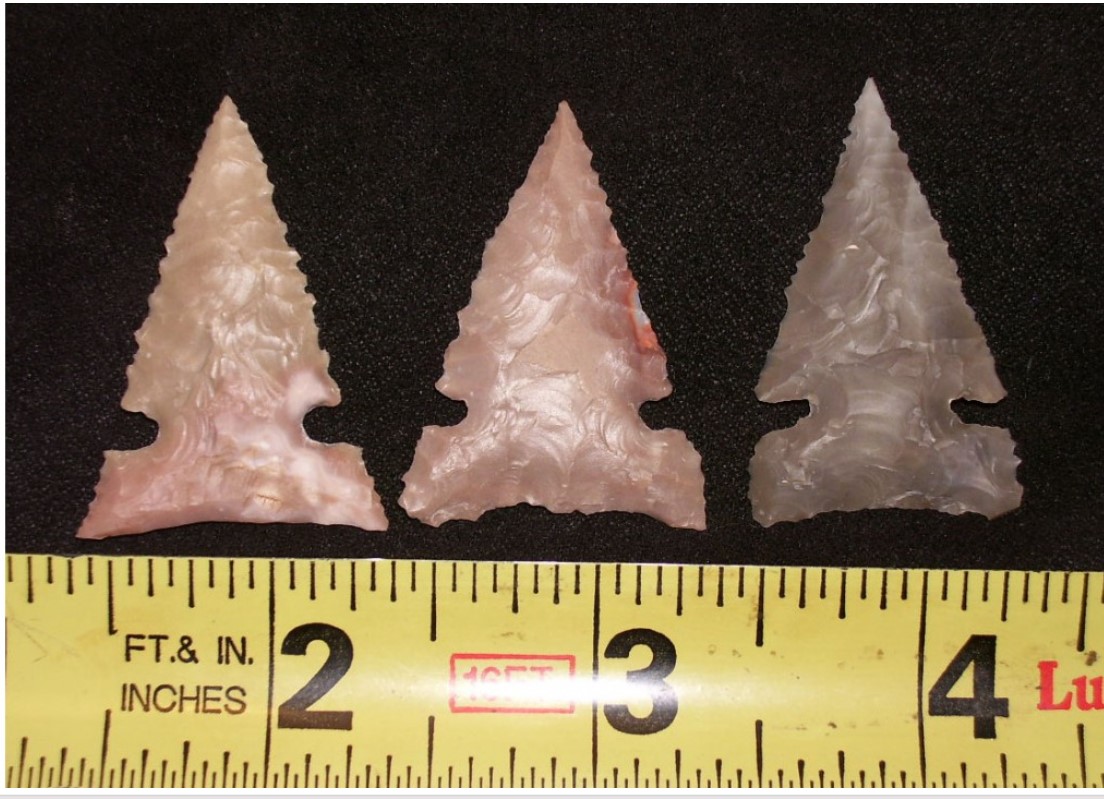
$55.00
Here are 3 flint hunting points made of heat treated Texas flint that are ready for the hunt. Their finely serrated edges are super sharp and they’re side-notched with no barbs to conform to any state that requires non-barbed arrowheads. They also provide 7/8-inch cutting widths to comply with states requiring minimum widths. The wider cutting width will open gaping holes for short, heavy blood trails and quick recoveries. They’re stout too, making them resistant to breakage when penetrating ribs. Because these points provide a slightly wider than normal cutting width when compared to other stone points I offer, heavy arrows shot from bows pulling at least 55 lbs are recommended to ensure adequate penetration. Click photos for larger images. Free shipping within the US.
-
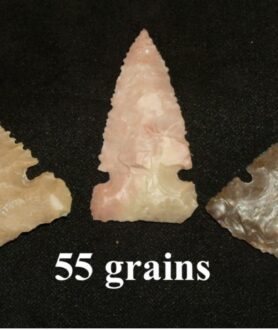
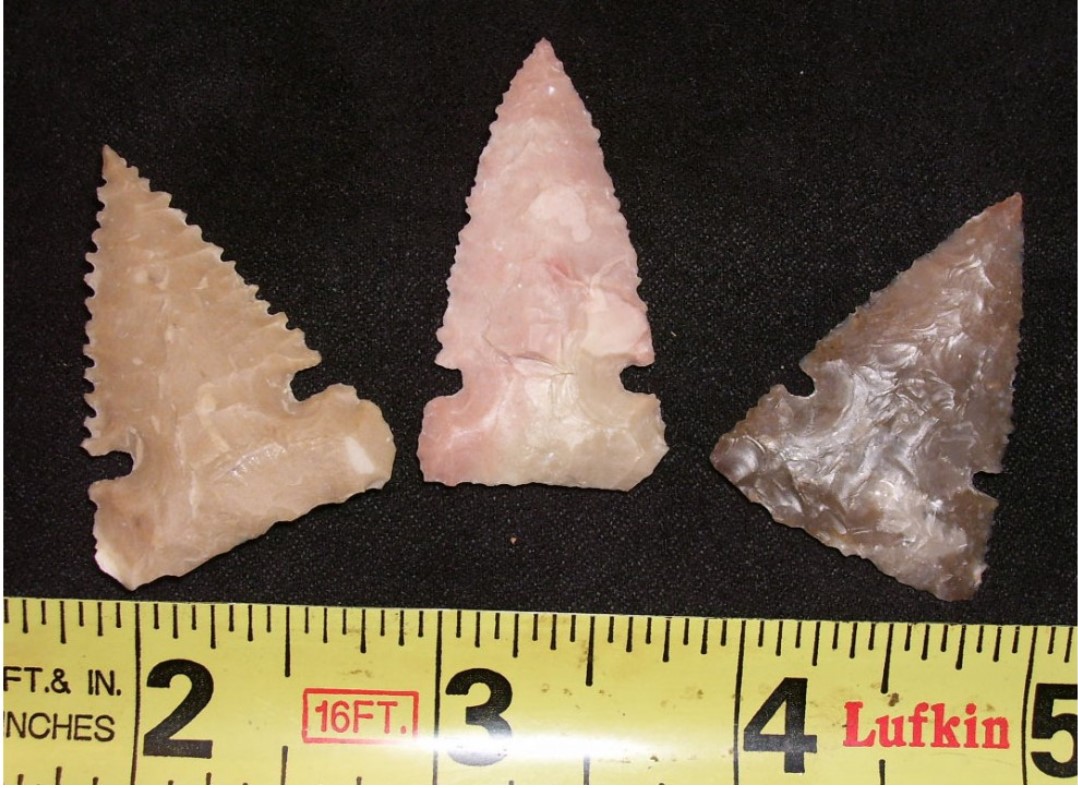
$60.00
These 3 flint hunting points are made of Texas flint and are deadly sharp. Their finely serrated edges are unsurpassed for hunting and they’re side-notched with no barbs to conform to any state that requires non-barbed arrowheads. They also provide minimum 7/8-inch cutting widths to comply with states requiring minimum widths. They’re thin for minimum resistance and their wider cutting width will open gaping holes for short, heavy blood trails and quick recoveries. They’re stout too, making them resistant to breakage when penetrating ribs. Heavy arrows shot from bows pulling at least 55 lbs are recommended to ensure adequate penetration. Click photos for larger images.
-
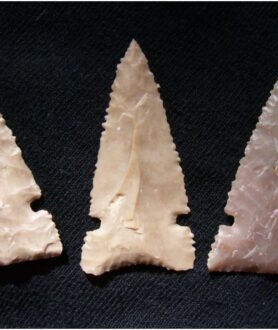
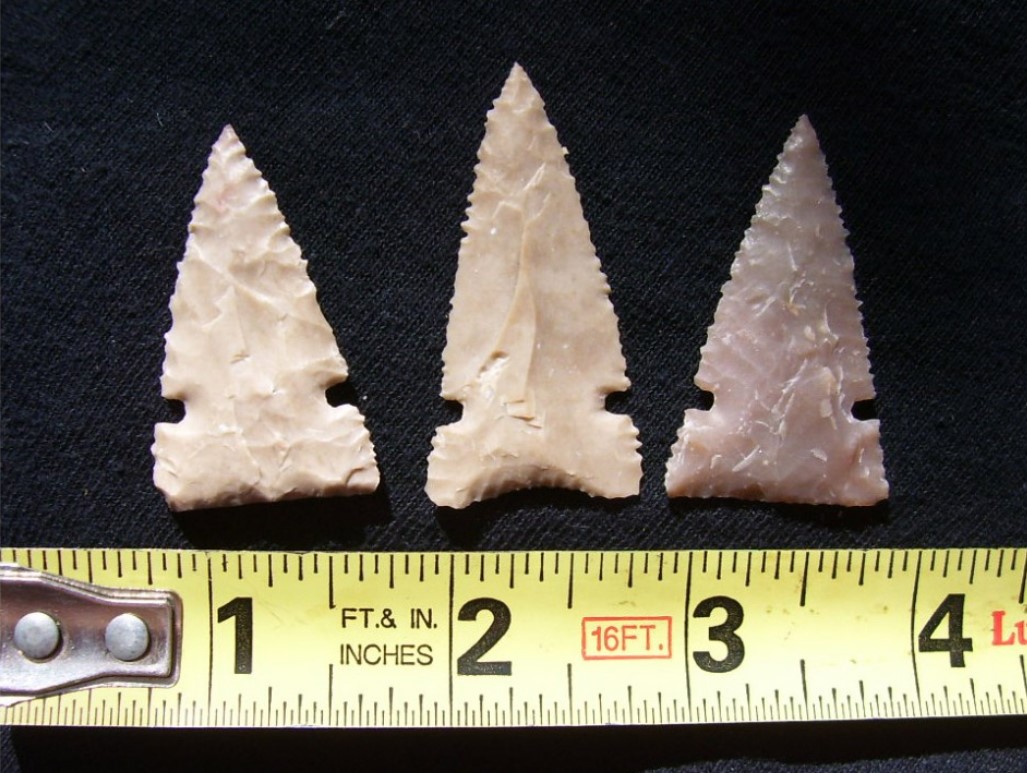
$65.00
This set of 3 matched weight flint hunting points are designed for big game. They all weigh 60 grains (+/- 1 grain) and are side notched for durability and sturdy hafting and do not have any barbs to conform with states that require non-barbed broadheads. The edges are finely serrated and they provide 7/8″ cutting widths for large entry wounds, rapid blood loss and quick, humane kills. These points have been proven in both North America and Africa, and will bring down any big game animal if the arrow is put in the right spot. Identical points have been used to take down tough African plains game like kudu and wildebeest. Free shipping within the U.S.
-
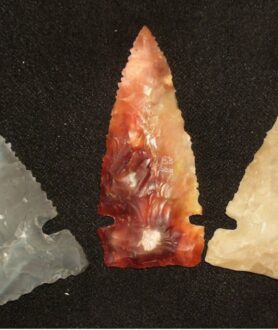
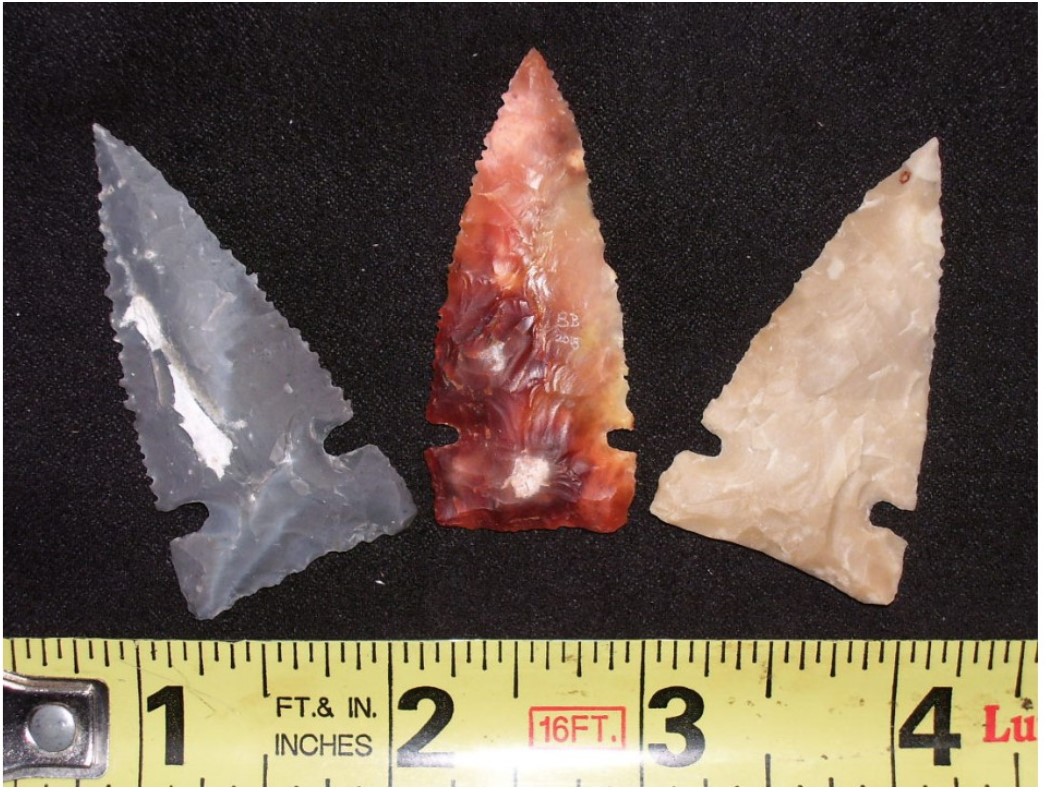
$75.00
These 3 flint hunting arrow points all weigh 80 grains (+/- 4 grains) and are well made, super sharp hunting points. There’s a nice mix of colors too: bluish gray, khaki tan, and reddish brown. They feature finely serrated edges with sturdy cross-sections for durability when used on tough big game like trophy deer or wild hogs. They’re side-notched without barbs to conform to some states that require non-barbed arrowheads. They also provide a minimum 7/8 inch cutting width for heavy blood trails and quick recoveries. Deliver these points to the vitals of your next trophy and they won’t be going very far. Identical points have been used to bring down tough African Plains game. Free shipping within the U.S.
-
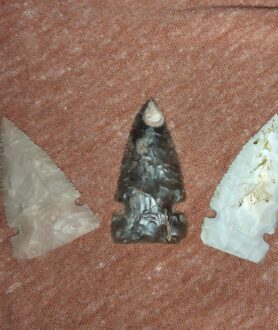
$85.00
These 3 stone hunting points weigh 100 grains and are designed for big game hunting. They have very sharp, finely serrated edges that are so sharp they feel sticky when your finger is drawn across the edge. They also are non barbed to comply with states that have a design requirement that broadheads are non-barbed.
-
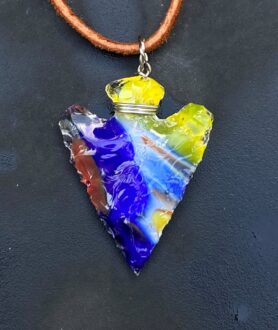
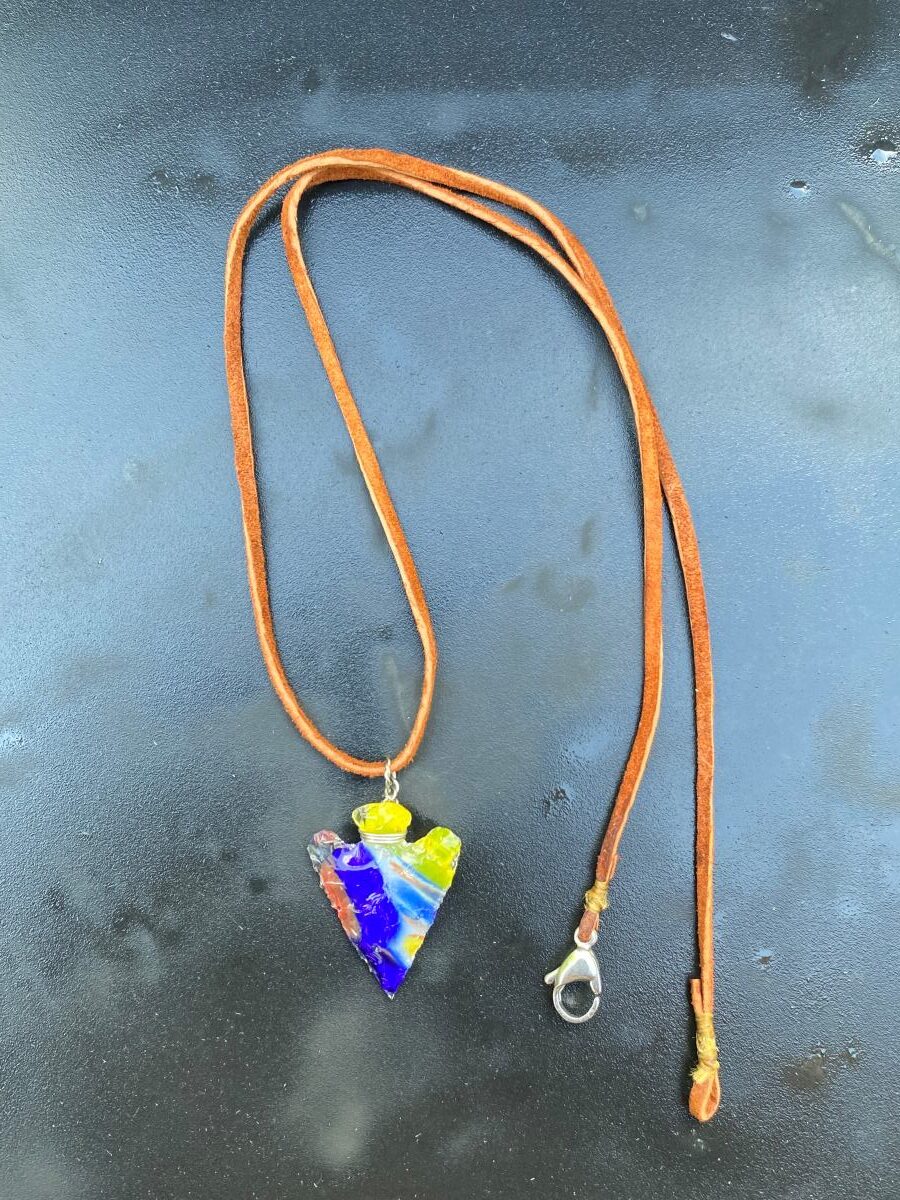
$23.00
A multicolored glass arrowhead is featured on this necklace. It’s wrapped with stainless steel wire and strung on a brown leather cord with a stainless steel lobster clasp. The cord is 23 inches long
-
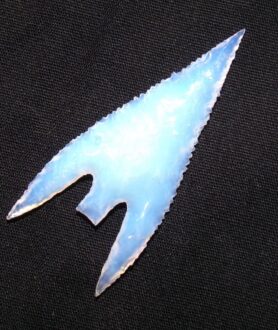
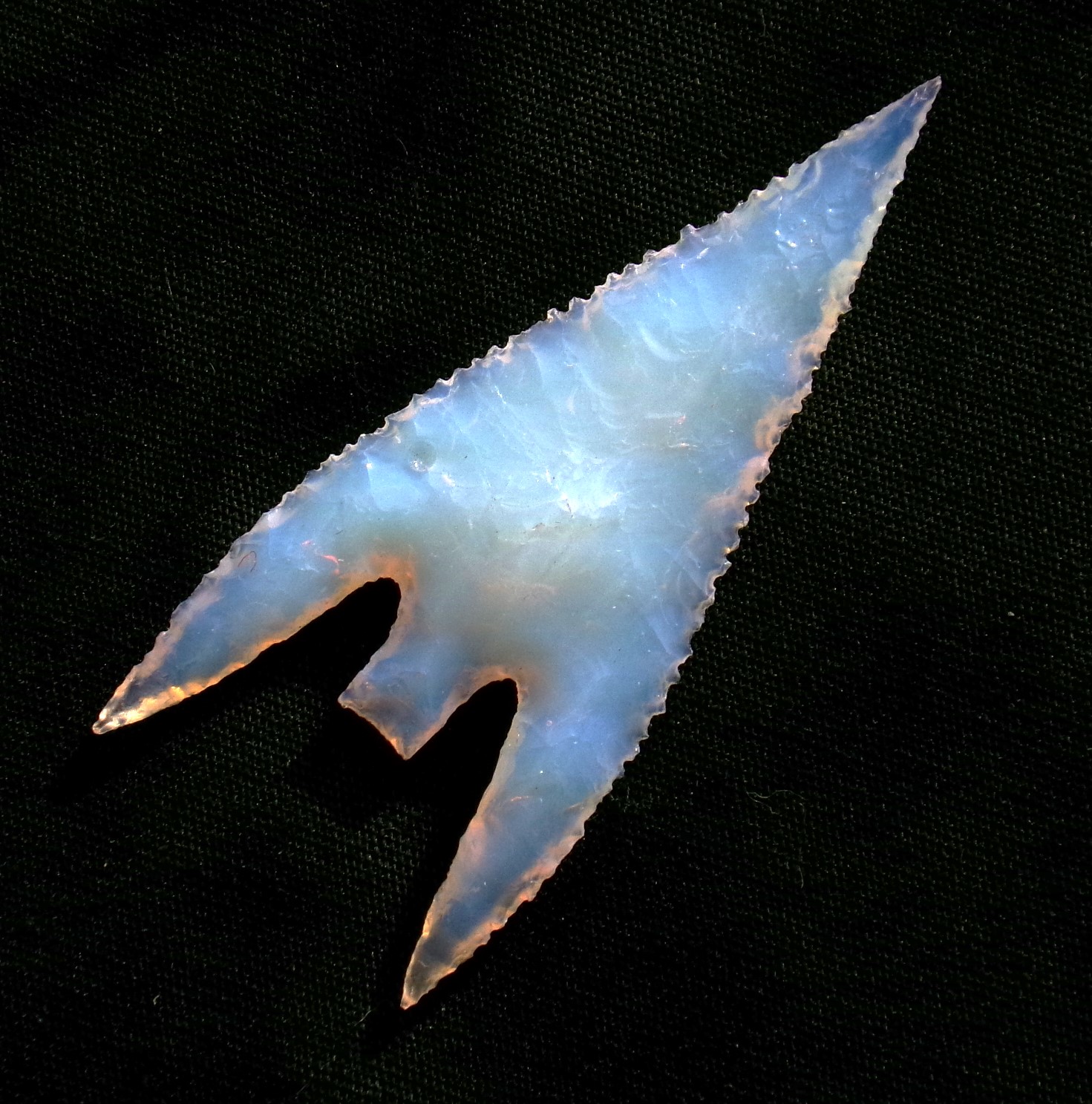
$40.00
This Gunther Barbed point is made of opalized glass and has a pretty, translucent bluish white color. It does look like opal but without the flash or color associated with natural opal. As you can tell, this point has very sharp tips and barbs with finely serrated edges that are very sharp.
Arrowhead Specs: Opalized glass, 1 3/4″ long x 3/4″ wide. Free shipping within the U.S.
-
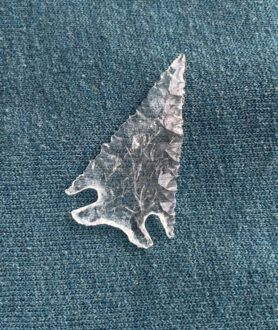
This glass arrowhead copies the ones used by Ishi while he was living in the wilderness of Northern California. They were made from scavenged bottle and window glass and he’d hunt deer and other game with them. This point is made of thin window glass and they are often called “abo Ishi points” to designate them as the ones he used specifically for hunting when he was living his aboriginal lifestyle. These differ from the more famous side-notched Ishi points that he made once he abandoned the wilderness and came to live in modern society. Free shipping to all U.S. customers.
-
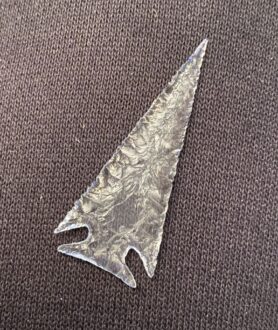
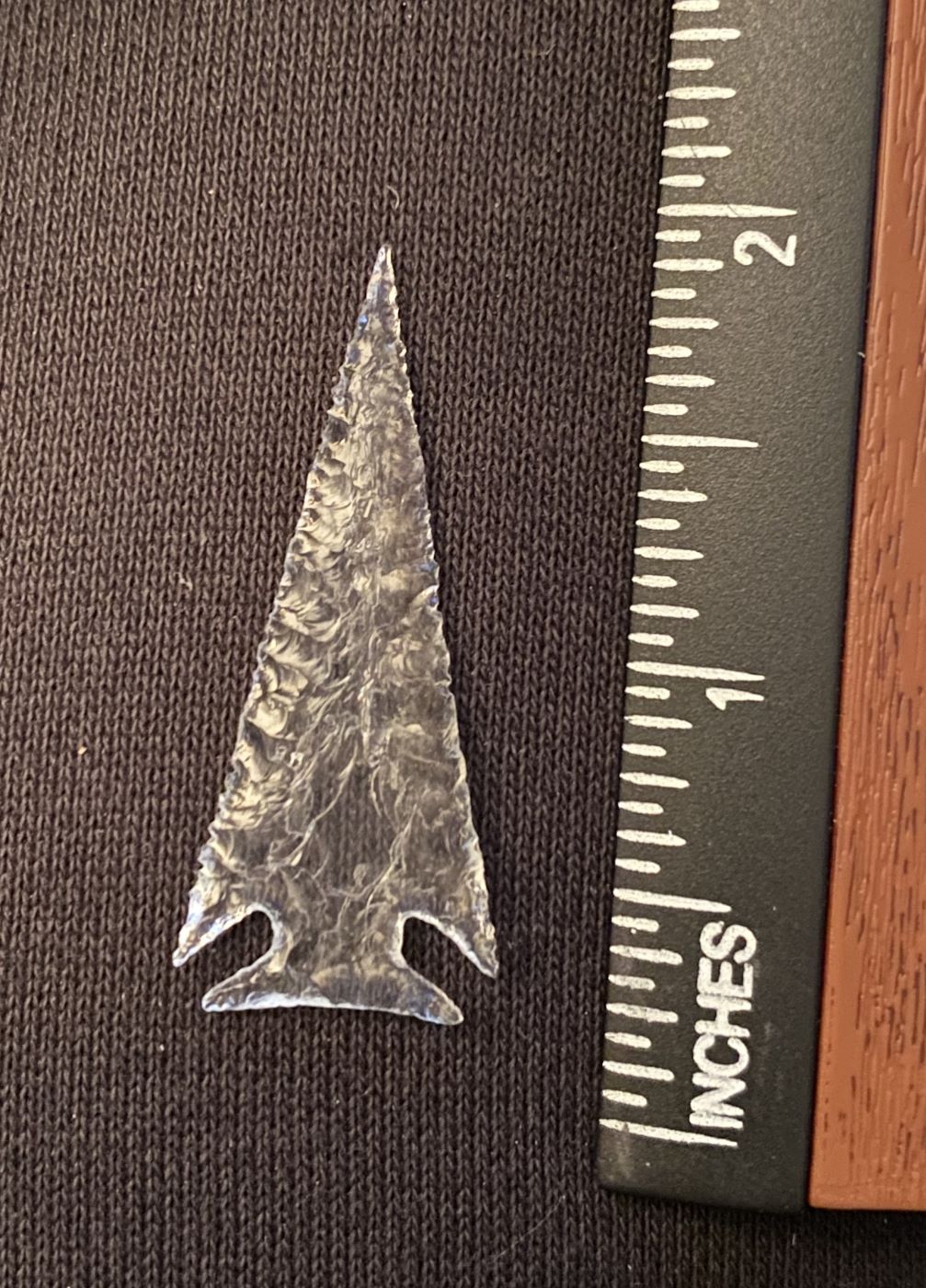
$30.00
This finely made glass arrow point copies the type of arrowheads that Ishi, “the last wild Indian of North America”, made and tipped his arrows with when he was still living in the wilds of northern California. Ishi made arrowheads from discarded glass bottles he found at old ranch dumps, and he’d also use pieces of broken window glass for his points. This point is made of window glass, and copies those that tipped his hunting arrows. His hunting points differ from the larger, Wintu style points he made after coming out of the wilderness. Scroll through the photos and you’ll also see a photo of Steve Allely with a deer he killed using replica Ishi archery gear. Rest assured these points work. This is a great gift for yourself or someone who loves the wild west, history, or Native American culture. Free shipping to all US customers.
-
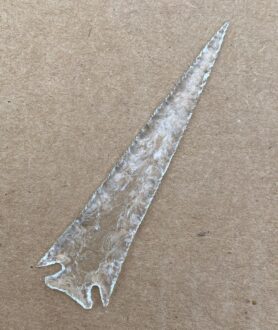
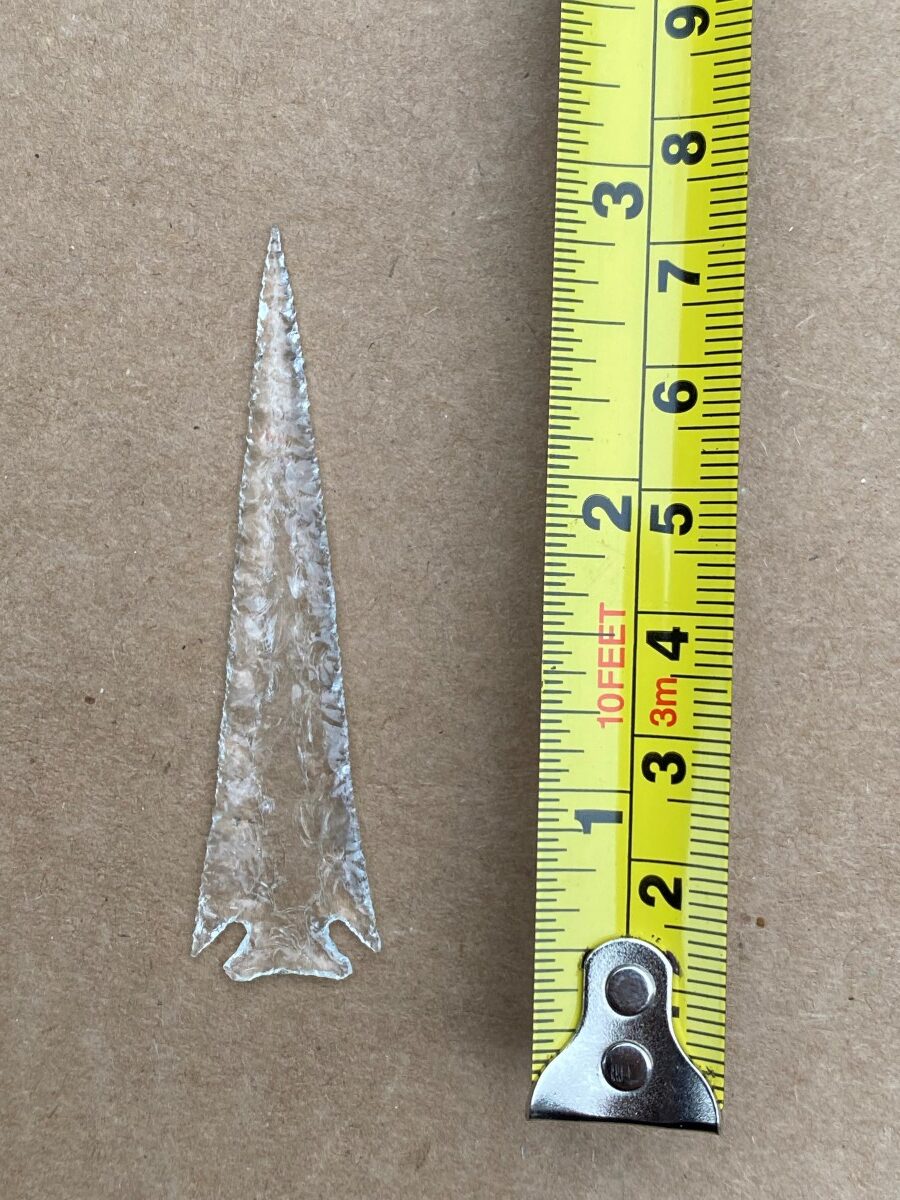
- This finely made glass arrow point copies the type of arrowheads that Ishi, “the last wild Indian of North America”, made and tipped his arrows with when he was still living in the wilds of northern California. Ishi made arrowheads from discarded glass bottles he found at old ranch dumps, and he’d also use pieces of window glass for his points. This point is made of window glass, and copies those that tipped his hunting arrows, though it’s a bit longer than his original points. His hunting points differ from the larger, Wintu style points he made after coming out of the wilderness. Scroll through the photos and you’ll also see a photo of Steve Allely with a deer he killed using replica Ishi archery gear. Rest assured these points work. This is a great gift for yourself or someone who loves the wild west, history, or Native American culture. Free shipping to all US customers.
-
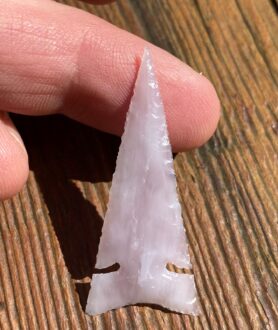
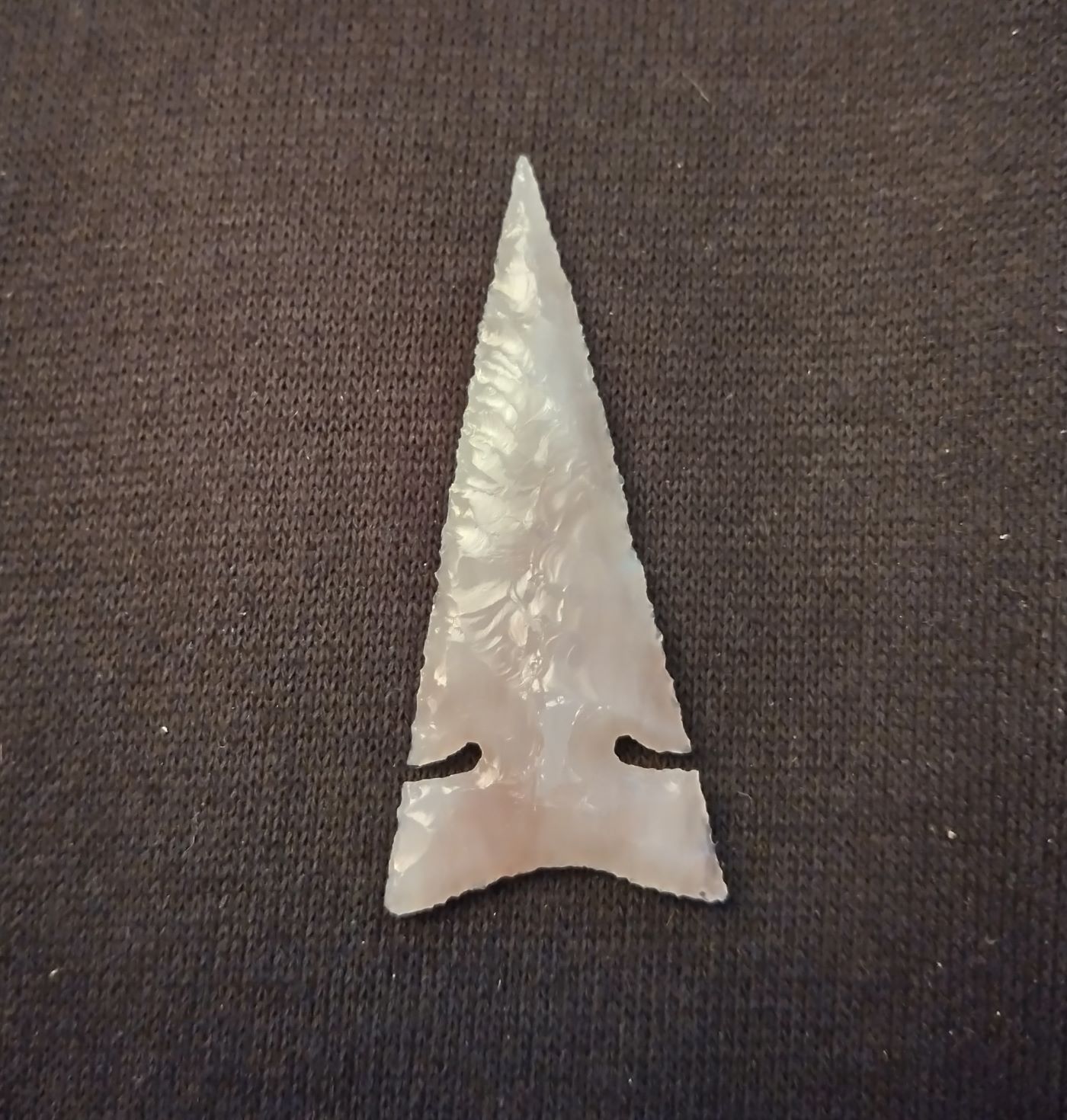
Wintu arrowhead made of marbled white and lavender glass.






















